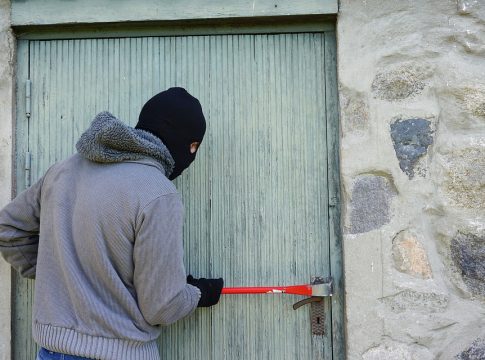When it comes to home safety, burglary is a nightmare scenario that many of us prefer not to think about. But ignoring the reality of these crimes can leave you vulnerable. The good news is that understanding the statistics surrounding burglaries can help you take proactive measures to protect your home and loved ones. In this article, we’ll explore ten shocking burglary statistics that might make you re-evaluate your own security measures. It’s time to face the facts and arm yourself with the knowledge to keep your home safe.
1. One in Every 36 Homes
Did you know that, on average, one in every 36 homes will experience a burglary each year? This startling statistic from the FBI highlights the prevalence of these crimes across the nation. For homeowners, this number serves as a wake-up call; it’s not just someone else’s problem. Being proactive about security can make a significant difference—for instance, investing in quality locks and a good alarm system.
2. Most Burglaries Happen During the Day
About 66% of burglaries occur during daylight hours when most people are at work or school. Criminals often see this as an opportunity to break in without being interrupted. This statistic is crucial for people who might think their home is only vulnerable at night. Making your home appear occupied—like using timers for lights—can deter potential intruders.
3. 30% of Burglars Enter Through Unlocked Doors
Surprisingly, around 30% of intruders enter homes through unlocked doors. This is a shockingly simple oversight that many people make. No matter how safe you feel in your neighborhood, always check that your doors and windows are locked, even when you’re home. A little vigilance can save you a lot of heartache.
4. There’s a Spike in Burglaries During the Holidays
The holiday season sees an uptick in burglaries, with statistics suggesting that crime rises by up to 25% in December. Thieves take advantage of the bustling atmosphere and the fact that many homes are left unattended while families travel. To combat this, consider taking measures such as asking a neighbor to keep an eye on your home or using smart home technology to give the impression that you’re home.
5. Small Items are Usually the Targets
Most burglars don’t aim for large items like televisions or furniture; they go for items that are easily concealable, such as jewelry, laptops, and cash. These small items can have significant emotional and monetary value. To protect against this, consider a secure safe for your most valuable belongings. It provides peace of mind knowing they are protected from easy theft.
6. Homes Without Security Systems are Three Times More Likely to be Burglarized
If you think security systems are just for show, think again. Homes without security systems are statistically three times more likely to be targeted by burglars. Investing in a proper security system not only deters intruders but can also lead to lower homeowner’s insurance premiums. Consider exploring monitored security services that can alert authorities in emergencies.
7. Most Burglaries are Committed by Someone You Know
It’s unsettling to learn that 73% of burglaries are committed by someone familiar with the victim. This statistic highlights the need for caution when it comes to sharing information about your home and valuables. Be cautious with whom you invite into your home, and consider using privacy settings on social media to safeguard your life—especially when you’re away.
8. A Quick In-and-Out
Did you know the average burglar spends only about 8 to 12 minutes inside a home? That’s the time it takes to quickly grab valuables and make a fast exit. This statistic emphasizes how crucial it is to have security measures in place that can react quickly. By investing in high-quality locks and possibly even a home security camera, you can significantly reduce your burglary risk.
9. Change in Crime Patterns
Interestingly, burglary rates are not consistent; they can vary depending on economic conditions. In times of economic unrest, we often see spikes in burglary rates. Being aware of these fluctuations can help homeowners prepare and stay vigilant. Always review your home’s security in light of the broader economic climate; reassessing your precautions could be essential.
10. Neighborhood Watch Programs Reduce Crime
Communities that participate in Neighborhood Watch programs experience a significant drop in crime rates, with reports showing reductions of up to 40%. Getting involved with your neighbors or forming a community watch can instill a sense of safety and camaraderie, effectively deterring potential criminals. This sense of unity doesn’t just make your block feel safer but can lead to lasting relationships with your neighbors.
Protect Your Home, Sleep Better
Understanding these shocking burglary statistics is the first step toward enhancing your home security. The implications are clear: being informed empowers you to take better precautions and keeps you safer. From investing in security systems to practicing basic safety measures, there are many ways to protect your home from burglary.
What measures do you take to safeguard your home? Share your experiences or tips in the comments below!

Covers viral stories, pop culture, and breaking celebrity news.
Bio: Jamie has a sharp eye for what’s buzzing online, tracking social media trends and entertainment headlines around the clock.

